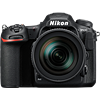Main
Model
Price
Advantages
launch
Announced
Body type
Camera subcategory
Sensor
Effective pixels
Max resolution
Sensor size
Sensor type
Processor
Image ratio w:h
Other resolutions
Sensor photo detectors
Image
ISO
Boosted ISO (minimum)
Boosted ISO (maximum)
White balance presets
Custom white balance
Image stabilization
Uncompressed format
JPEG quality levels
Photography features
Minimum shutter speed
Maximum shutter speed
Aperture priority
Shutter priority
Manual exposure mode
Subject / scene modes
Built-in flash
External flash
Flash modes
Continuous drive
Self-timer
Metering modes
Exposure compensation
AE Bracketing
WB Bracketing
Maximum shutter speed (electronic)
Screen / viewfinder
Articulated LCD
Screen size
Screen dots
Touch screen
Screen type
Live view
Viewfinder type
Viewfinder coverage
Viewfinder magnification
Viewfinder resolution
Videography features
Resolutions
File Format
Microphone
Speaker
Optics & Focus
Autofocus
Digital zoom
Manual focus
Number of focus points
Lens mount
Focal length multiplier
Focal length (equiv.)
Optical zoom
Maximum aperture
Normal focus range
Macro focus range
Physical
Weight (inc. batteries)
Dimensions
Environmentally sealed
Battery
Battery details
Battery Life (CIPA)
Storage
Storage types
Storage included
Connectivity
USB
HDMI
Microphone port
Headphone port
Wireless
Wireless notes
Remote control
Other features
Orientation sensor
Timelapse recording
GPS
GPS notes
Samples
Videos
Summary
The Q (Typ 116) maximum resolution of 6000 x 4000 pixels (24 megapixels) is better than the Nikon D500 highest resolution of 5568 x 3712 pixels (21 megapixels). The Q (Typ 116) is equipped with bigger sensor than the Nikon D500: Full frame (36 x 24 mm) versus APS-C (23.5 x 15.7 mm). It is very important advantage of this model because big sensor lets the photographer to capture pictures of the better quality. The Nikon D500 offers more number of focus points than the Q (Typ 116): 153 vs 49. More number of focus points means more convenience when attempting to focus on objects that are not centred.
The D500 is equipped with tilting display that will let the photographer to capture photos from any interesting perspective. The Nikon D500 screen is better as it offers more number of screen dots 2,359,000 in comparison to 1,040,000 dots of the Q (Typ 116) display. The higher dot count screen is better for reviewing photos on your camera. The D500 provides better maximum shutter speed - 1/8000 second.
The Leica Q (Typ 116) weighs 640g that is 220g lighter than the weight of the D500. The D500 can utilize optional accessory GPS devices. This feature can be convenient if the camera owner is a traveller, to be able to check the image metadata and find out exactly where a photo was shot.
The Nikon D500 and the Q (Typ 116) have an equal number of advantages but as the Leica Q (Typ 116) has bigger sensor that is a very important advantage then it will be the best buy.


